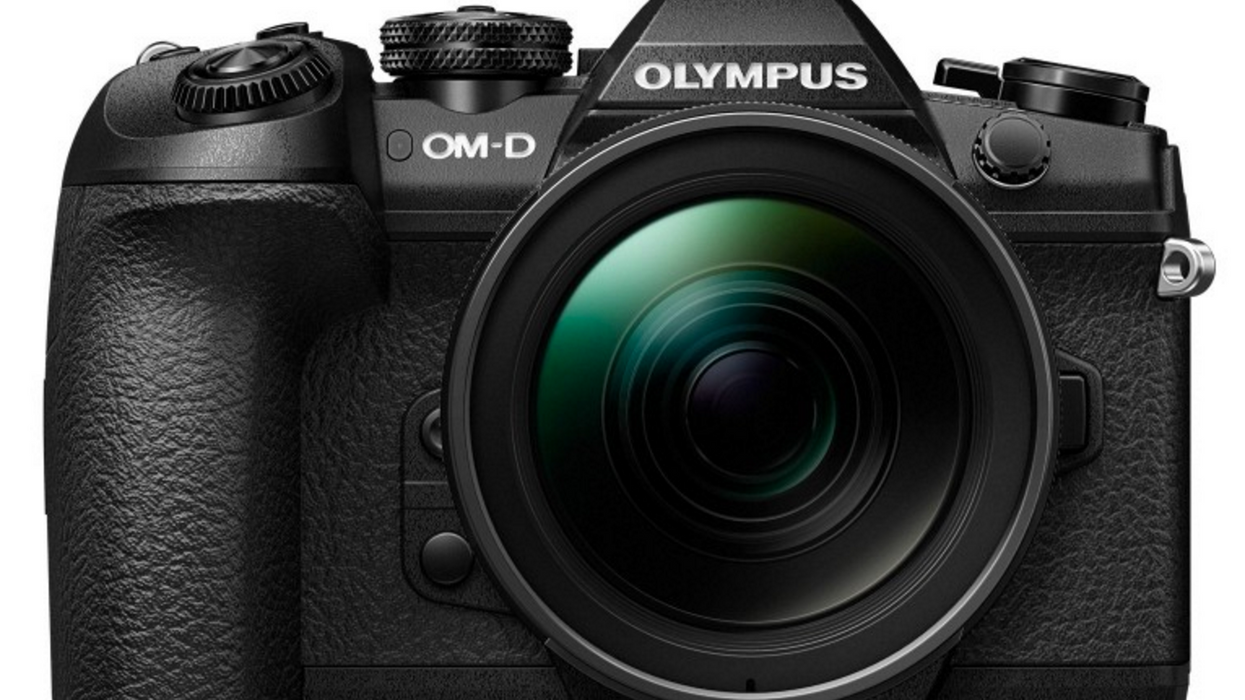Olympus Announces 4K Mirrorless Camera
Olympus announced the refresh to its flagship mirrorless camera and adds full "cinematic" 4096 4K video.

Olympus has long been one of the leaders (along with Panasonic) in the mirrorless Micro 4/3 world, but the Panasonic GH line has always been more popular with filmmakers. With the announcement of today's update to the Olympus flagship OM-D EM1 line, Olympus is bringing in more filmmaking features, including options for "cinema" 4K, or video that is 4096 pixels across.
There is a major limitation with the 4K in this camera that might leave some filmmakers frustrated.
Considering that the competitor camera from Canon, the M5, which lives at a slightly higher price point, still shoots 1080 video, having 4K in this camera is great. The ability to choose between 4096 4K and 3840 4kK (otherwise known as UltraHD) is also much appreciated. However, there is a major limitation with the 4K in this camera that might leave some filmmakers frustrated: Both UHD and C4K are limited to the intraframe compressed IPB codec mode only, and the "all-i" video modes most filmmakers prefer are limited to 1080.

All-i video is preferable because it treats every frame as a keyframe. This means that while compression is applied, it's applied to each and every individual frame separately, ignoring the content around it. This creates much larger file sizes (sometimes three times as large as IPB), but they are much easier to edit and tend to create nicer-looking images in situations where the frame content changes moment to moment.
For static interviews or more traditionally captured, tripod-based narrative footage, IPB can be a great method.
IPB compresses groups of frames together; you'll also sometimes hear a similar process mentioned, Long GOP (group of pictures), since a long group of pictures is compared for compression. This can lead to even better-looking pictures than All-I in much smaller file sizes, but it has a few drawbacks. Intraframe/Long GOP recording is sometimes harder for your editing system to handle (requiring conversion to an intermediate codec like DNxHD or ProRes), and with really fast moving footage—handheld action scenes, for instance—you can see compression artifacting. But for static interviews or more traditionally captured, tripod-based narrative footage, IPB can be a great method.
The good news is that the IPB data rate for 4K is 237Mbps, which should be enough bandwidth for very minimal compression and high-quality images. UHD bumps down to 102Mbps, and while it does offer a 30fps mode, I would advise shooting this camera in C4K 24p to take advantage of the bigger bandwidth.

Like the recent announcements for Panasonic, this camera is slated for an early 2017 release. What do you think: Are the features you see here exciting enough to think about Olympus for the next round? Or are the GH5 features too enticing for any of the competition to feel like a serious contender?
Tech specs
- 4096 × 2160 (C4K) / 24p / IPB (approx. 237 Mbps)
- 3840 × 2160 (4K) / 30p, 25p, 24p / IPB (approx. 102 Mbps)
- Dual SD Card Slots
- 4/3" Live MOS Sensor
- 4:3 / 17.4 x 13.0mm
- 21.8 million actual pixels, 20.4 million effective pixels
- Built-in 5-axis (yaw/pitch/roll/vertical shift/horizontal shift) sensor-shift image stabilization for movie and stills
- 64 - 25600 ISO
- MOV(MPEG-4AVC/H.264), AVI (Motion JPEG) Recording Formats
- 29 minute MOV record time
- Micro HDMI (type D)
- φ3.5 stereo mini jack (plug-in power on/off) input and headphone










![Ethos, Pathos, Logos: 20 Effective Ways to Advertise [Infographic]](https://nofilmschool.com/media-library/ethos-pathos-logos-20-effective-ways-to-advertise-infographic.jpg?id=34064614&width=600&height=600&quality=90&coordinates=560%2C0%2C0%2C0)

